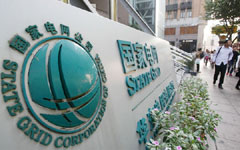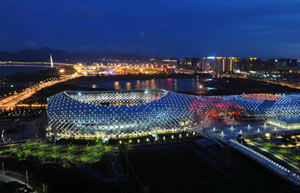The Chinese government set a target of non-fossil fuels of 11.4 percent of the country's energy consumption by 2015, according to its 12th Five-Year Plan (2011-2015). Non-fossil fuels accounted for 9.8 percent of the country's total energy use in 2013, up 0.4 percentage point year on year, according to the National Energy Administration. But the intermittent nature of power generation from renewable sources such as wind and the sun can challenge the reliability of the grid as a power source.
Smart grids enhance power transmission and distribution networks through information technology.
|
 |
"At this point, there is a debate as to whether China will develop (a smart grid) from scratch or will adopt products that have been tried and tested in other markets," Poux-Guillaume said.
"Our preference is using things we have already developed because it will be a significant gain of time and money for China. The most efficient way is to use some of the technology bricks we already have and adapt them (to the Chinese situation). We just have to converge our positions," he said.
In addition to Alstom Group, key foreign electricity transmission vendors in China include Swiss-based ABB Group, GE Energy of the United States and France's Schneider Electric.
Alstom, with six factories making power transformers, high-voltage switchgear and instrument transformers in China, opened its Shanghai technology center in 2012. The center is the company's only global R&D and testing center for UHV transmission equipment and energy management solutions.
Poux-Guillaume said that he hopes Chinese authorities consider Alstom a domestic player "because we have domestic manufacturing and domestic innovation."
|
 |
 |
| China's top 10 richest cities |
